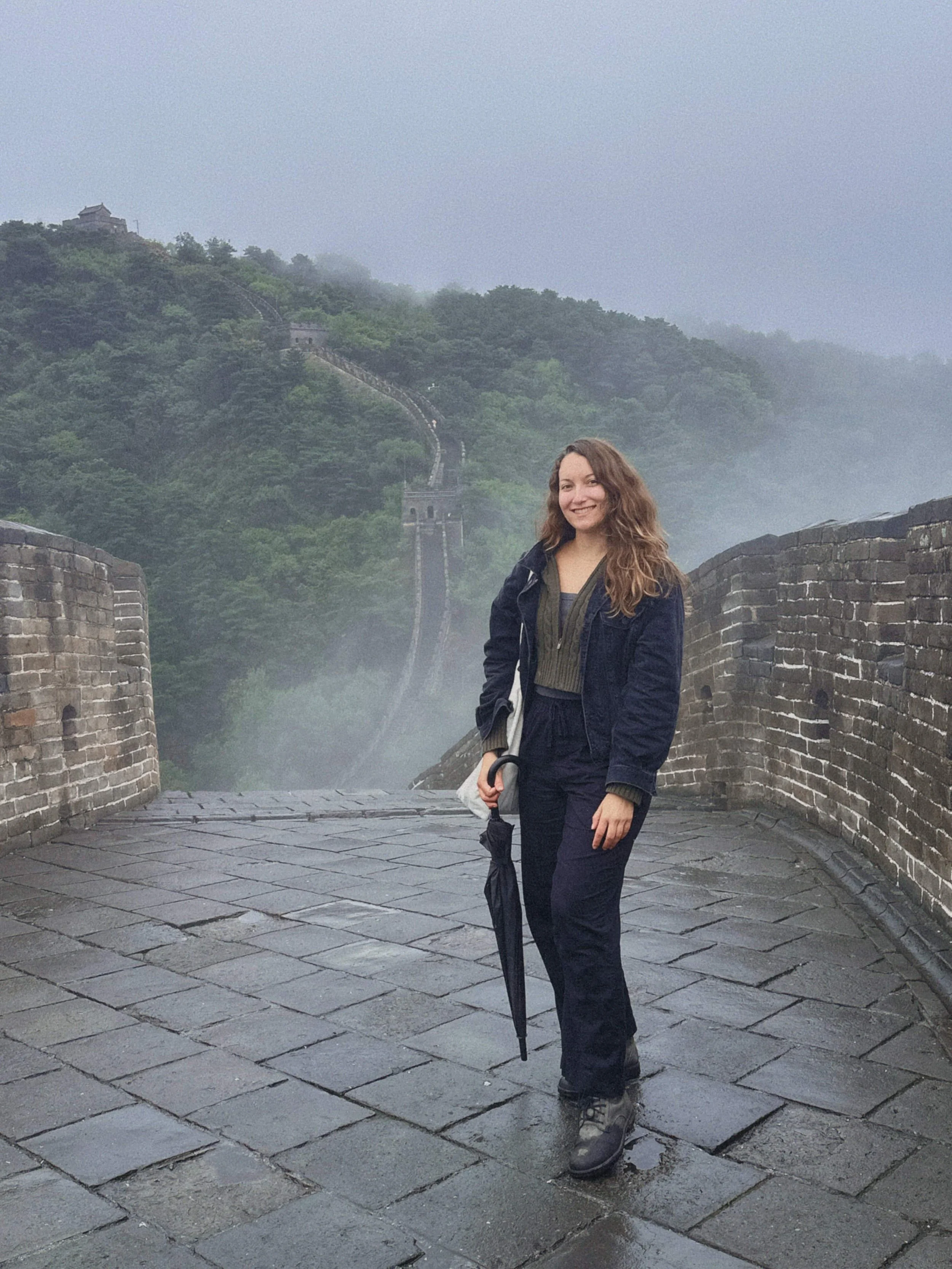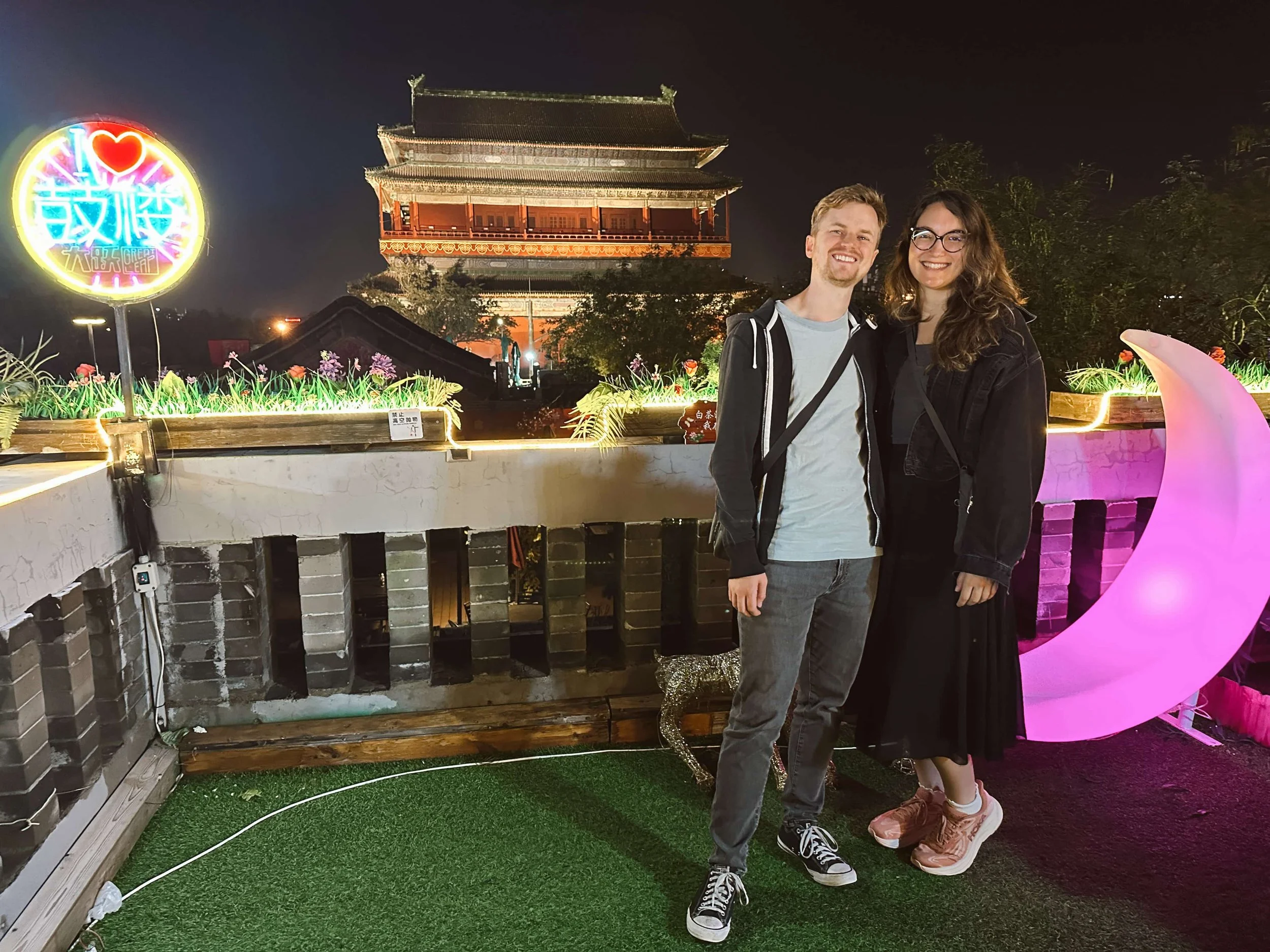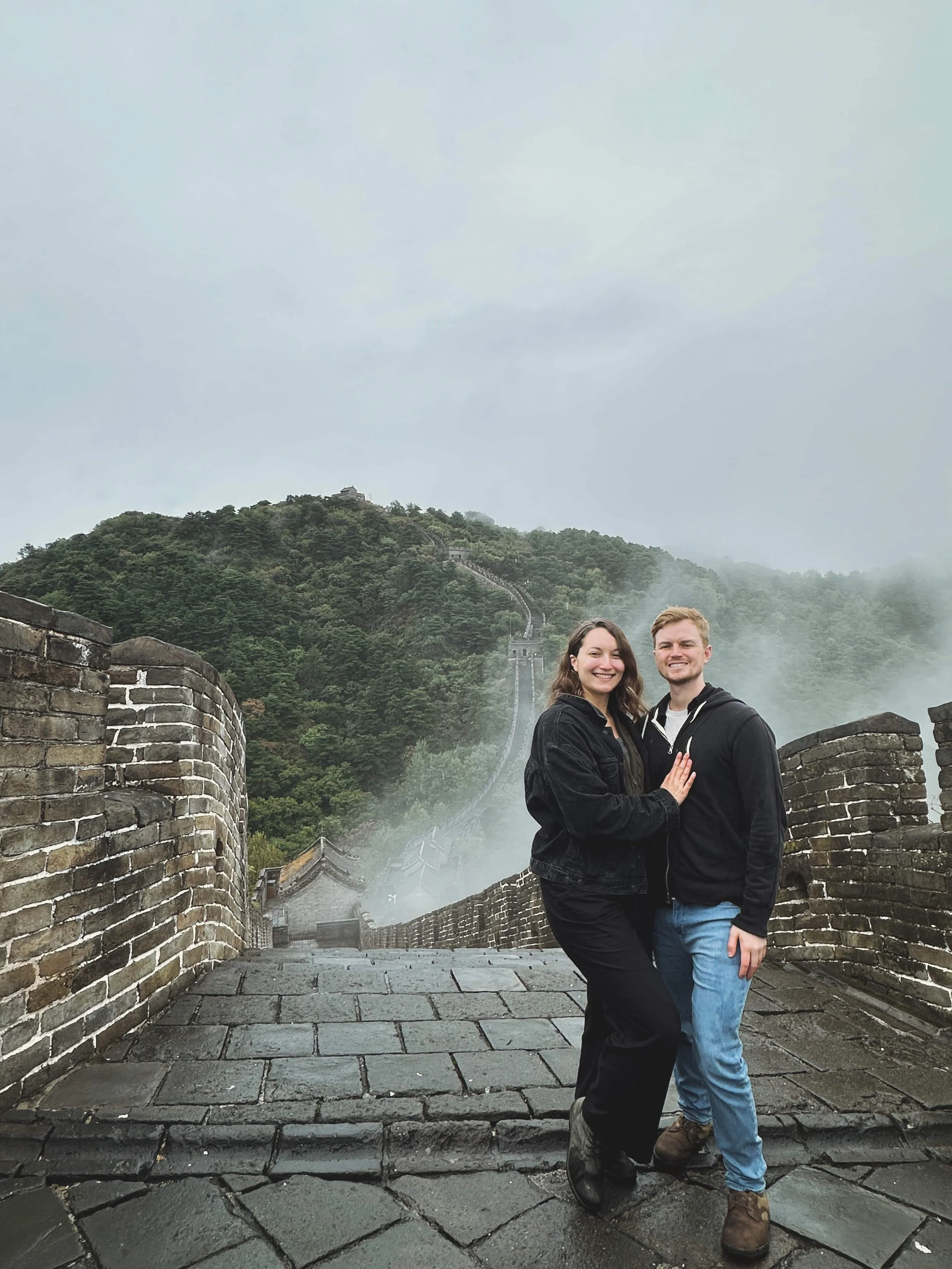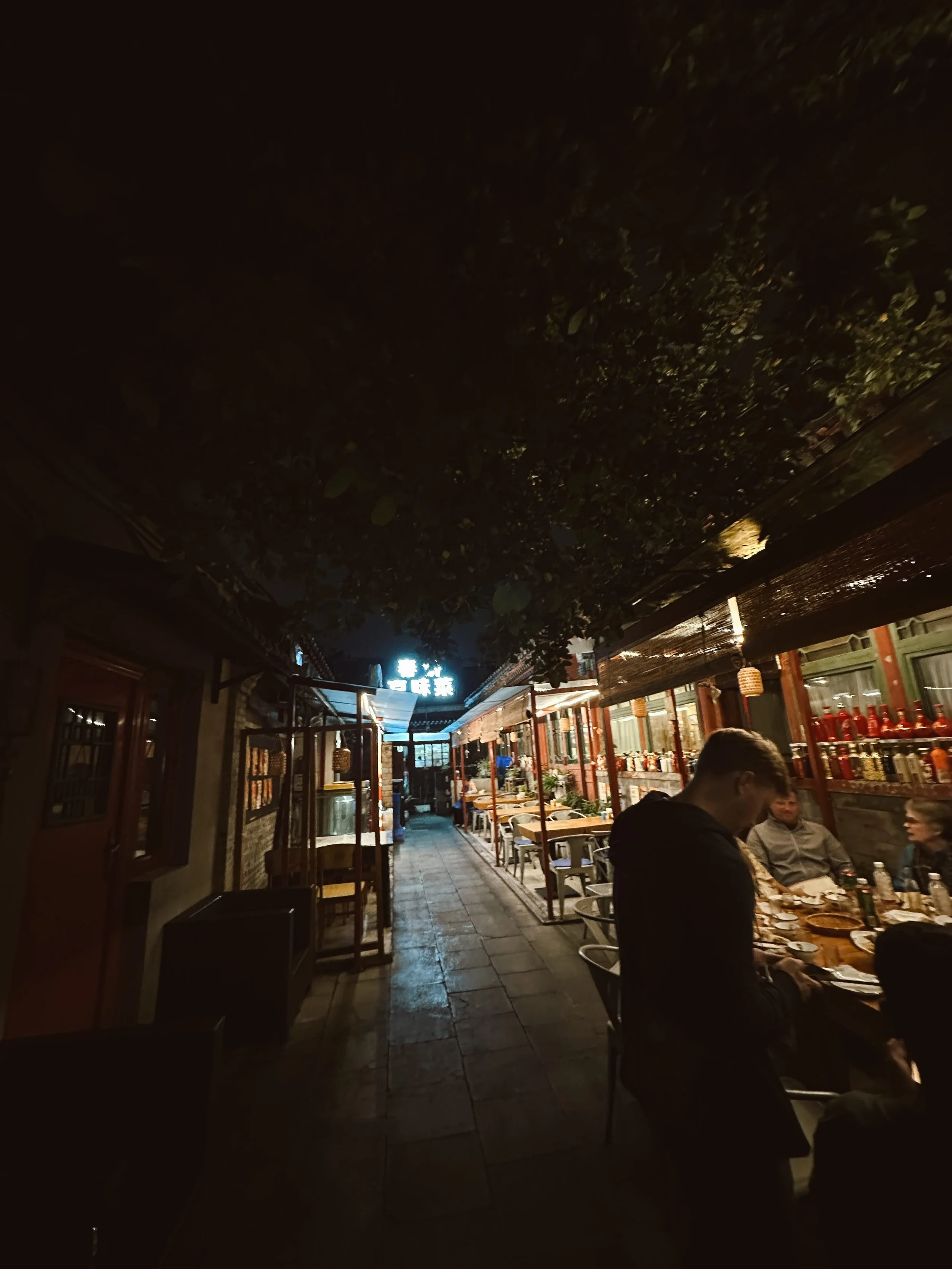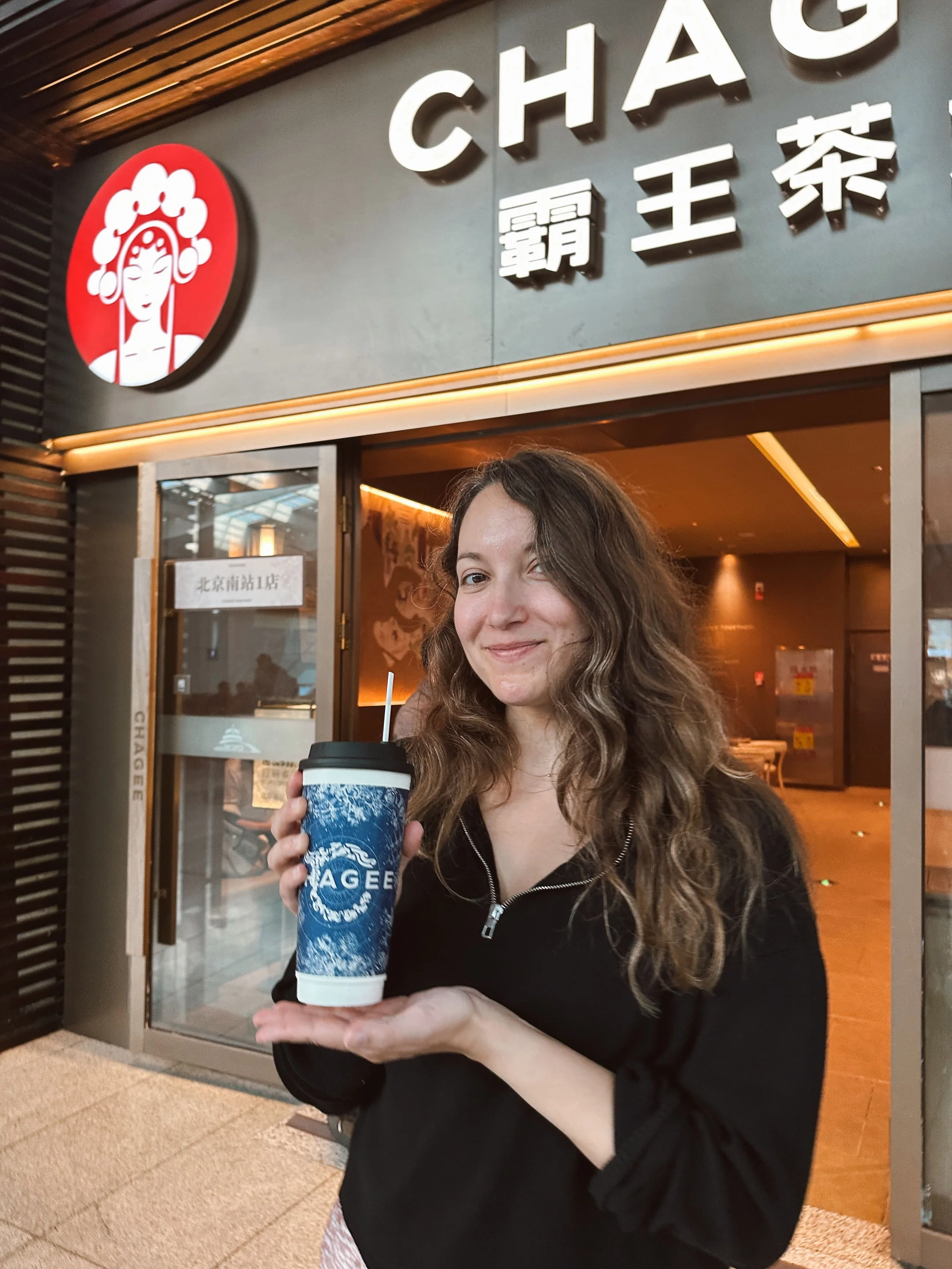Travel Guide: Beijing, China & The Great Wall Tour
It’s my first time in China, and I set aside an entire month to explore with my partner Kyle. Being able to drop everything and travel is one of the many perks of being a freelance writer and author — and one of the many reasons why I curate high-paying freelance writing jobs, pitch calls, and writing contests over at ✍️ Make Writing Your Job — so you can travel the world and make money while doing it, also!
The highlight of traveling to Beijing was our tour of the Great Wall of China. In my travel guide, I’ll be breaking down the best tour to see The Great Wall as well as where to eat, what to do, and where to stay in Beijing.
If you’re an avid traveler, you may have found me from my Working Remotely Travel Guide series. This isn’t ~ technically ~ a part of that series, as I wrote those posts on different destinations to visit as a digital nomad. I don’t recommend doing long-term travel here in China if you’re taking Zoom calls and actively working on freelance projects that require heavy internet access. (More on that in a later post!) Instead, come here to enjoy the hotpot, the history, and a culture that is in some ways both so similar and so different from our own.
Without further ado, here are my best tips for what to do when you visit Beijing, China:
The Vibe of Beijing, China
The rooftop and first stop of our evening food tour, a hotpot place overlooking the drum tower
Beijing surprised me in how… normal it was. To be completely honest, I was expecting to arrive to a city where everyone was shuttled around by self-driving cars and greeted by robots. (And maybe that will happen in Shanghai — will keep you posted as I’m writing this on a high-speed train headed there now!)
In reality, during my 7am morning walk by the river, I saw elderly people doing tai chi and playing ping-pong with their friends. Men in their thirties were going out jogging or shooting hoops. When we walked by some traditional hutong buildings in the old town we were staying in, we passed by a woman descaling freshly caught fish while a troupe of cats waited patiently to be fed scraps. We even passed a park where an older man was playing a saxophone.
Beijing is so very green, with tree-lined streets and massive parks and lakes. It’s a city that makes being outdoors lovely, and the climate in October was rainy yet fairly dry, with temperatures around 50-65 degrees Fahrenheit. We got more rain than we expected, but overall the city was enjoyable.
I had expected there to be more crowds, and while certain places were a bit crowded, I didn’t feel packed in like a sardine in too many places. There are, however, a ton of motorbikes and scooters everywhere (similar to Taiwan) and there is no “right of way” here. On one of our tours, our guide said that a common phrase here is “the best way to cross the street is between your Chinese friends” because you’re less likely to hit by a car this way.
There are two sides of Beijing: first, the “old town” areas with the hutongs (squat, one-story buildings ripped from a history book) and the outer, newer areas with skyscrapers, arts districts, and more modern elements. However, I found that Beijing is mostly a place to look into the past rather than into the future. It’s been preserved to not just be a capitol city, but to also be a looking glass into the past. That’s not to say you can’t find modern malls here, it’s just not the emphasis of the city.
It’s a great place to start your China trip, as it helps you understand the historical roots of the culture.
Where to Stay in Beijing, China
If you’re wondering where to stay in Beijing, let me save you some scrolling: Blossom House Hotel in the Old Town is the move. It’s tucked perfectly between serenity and chaos — just a five-minute walk to the river and a quick ride to every major tour spot, from the Forbidden City to the Temple of Heaven. In a city where traffic moves at the speed of a polite glacier, location is everything, and this one nails it.
At about $142 a night for the basic room, Blossom House hits that sweet spot of being affordable yet still a higher-end hotel. The perks are shockingly generous: a free minibar (yes, free) stocked with drinks and snacks, plus yogurt beverages I didn’t know I needed until I tried them. There’s also a solid gym and — the holy grail of long-term travel — free laundry.
Now, about breakfast: skip it. I didn’t see a single person eating there, which feels like a universal sign. The buffet looked like it was suffering from an identity crisis, and the price tag wasn’t helping. My unofficial rule of travel: if a hotel charges extra for breakfast, assume there’s a better one within a five-minute walk — and in Beijing, there always is.
The neighborhood itself is a blast. You’ll find karaoke bars by the river, complete with live bands and backup dancers belting out both Chinese tunes as well as early-2000s hits (nothing like hearing Poker Face echo across the water at midnight). Wander 20–25 minutes into the Hutongs, and you’ll hit a labyrinth of street food stalls, tea shops, and late-night dumpling spots worth every detour.
If you’re planning a Great Wall of China tour, a Forbidden City visit, or any classic Beijing itinerary, Blossom House Hotel is the perfect home base — modern comfort, unbeatable location, and enough free yogurt drinks to power you through jet lag.
The Best Great Wall of China Tour in Beijing
If you’re planning a Great Wall of China trip, the first decision is which section to visit — and how to get there. While adventurous travelers might hire a driver or attempt the train, the easiest and most stress-free option is this tour from Viator. It includes the Great Wall of China tour from Beijing that bundles together major sights like Tiananmen Square, the Forbidden City, and the Great Wall itself. (Also, the tour is listed as being 6 or 7 hours, but it’s more like 12 hours. They also sometimes don’t include food, so bring your own food and snacks!)
These full-day tours are ideal if you want to maximize your time without juggling tickets, transportation, or long entry lines. Most include hotel pickup, a comfortable shuttle bus, and a knowledgeable guide who manages your schedule. The only extra you’ll likely pay for is the chairlift or cable car up to the Wall — a small price for those sweeping mountain views.
It’s one of the most seamless ways to experience the Wall, especially if it’s your first visit to Beijing. You’ll start the morning immersed in the city’s imperial history, then end the day tracing your steps along one of the greatest engineering feats in human history.
Our own Great Wall of China tour ended up being pure magic — though by total accident. That morning, the rain was biblical. Sheets of water poured over the Forbidden City as we shuffled through courtyards with our umbrellas turning inside out. We kept hearing that other tours were being canceled, and assumed we’d spend the day staring at fog.
But our guide was determined, and we pressed on. By the time we reached the base of the Wall, the storm began to thin into mist. When our chairlift rose above the tree line, the clouds suddenly split apart — as if someone had drawn back a curtain. Sunlight spilled over the ancient stone, and to our astonishment, not a single other tourist was in sight.
For a surreal hour and a half, it was just us and the Great Wall, stretching endlessly into the horizon. Silent, gleaming, and impossibly vast. A rare, once-in-a-lifetime kind of quiet on one of the world’s most visited wonders.
What to Do in Beijing China (Aside From Visiting The Great Wall of China!)
The hutong courtyard and final stop of our evening food tour
There is a ~ lot ~ to do in Beijing. Unlike other trips I’ve done, I completely cleared my schedule and put most of my freelance writing client projects on hold for this entire month to be able to fully immerse myself in Chinese culture. (I’m also celebrating finally finishing the last draft of Write for Money and Power, my new book coming out this January 2026!)
Here are some of the highlights of our trip:
Visit the Summer Palace. This was by far my favorite park. Get here early because the crowds get crazy, and you may need to buy a separate admission ticket to climb to the incense temple if you don’t get an entrance ticket that includes it. We accidentally got the wrong ticket and had to purchase a ticket via a QR code right outside the temple, but it was worth it. Overall what a stunning walk: spend a few hours here winding in and around bridges, temples, and more.
Walk Around Chaoyang Park. Everyone here was driving around in cute little animal-themed golf carts or on the lake in boats. This is Beijing’s largest park that also has an amusement park known as Pop Mart Land inside. It’s a lovely place to just walk around and take in the sights and maybe grab some snacks. We wandered around here after dinner one night. No ticket required just to walk around here, but the Pop Mart Land requires a ticket.
Lost Plate’s Hutong Dinner Tour. If you’ve been around this blog for any of my other travel guides, you’ll know that food tours are my favorite way to see a city!!! This was a great dinner tour that included a rooftop hotpot restaurant and a courtyard Hutong bar. The vibes were great and while we had some better dishes elsewhere (I’ll drop my recs for you in the next section) it was neat to meet fellow travelers and our guide Joe was great.
Lost Plate’s Hutong Breakfast Tour. We also did their breakfast tour, and had some great bites — alongside a cool tour of a local market. I recommend doing both the dinner and breakfast tours if you have time! Both also have vegetarian options if you’re a veggie like me. (P.S. China so far has been much more vegetarian-friendly compared to Seoul, South Korea!)
Explore the 798 Art District. The Art District was ~ very ~ cool — and unexpectedly hip! We spent an entire day here just wandering in and out of tea and coffeeshops and window shopping. We didn’t even go into any of the galleries as we were just having a great time soaking in all the sights. Again, people where flying by in cute golf carts with cartoon eyes on them. I really appreciate all the micro-transportation here. I also tried my first Chagee tea here and became obsessed. There are lots of great places to eat here, despite it being a bit more “commercial” then other places we ate at in Beijing. I’d say this is a “can’t miss” stop if you want to experience the more modern side of the city.
Beijing History Tour. This history tour was interesting as it showed the evolution of Beijing over time, focusing on the city maps. The guide took us through a museum with a massive diorama of the city, and then afterwards we walked through the Hutongs pass some cute cafes and ended at a gallery. To be completely honest, this tour was a tad dry, but if you’re a history buff you’ll enjoy it.
Temple of Heaven. If there’s one attraction you can skip, it’s this one. I thought the Temple of Heaven was pretty mid — the Summer Palace was waaaaay cooler. Maybe it’s because I’ve just seen an insane amount of cool architecture over the years, but I thought the temples here were underwhelming. So if you’re strapped for time you can focus on other attractions.
Wangfujing Snack Street Stroll. We didn’t make it to this as it was closed for the rain when we went, but if you get a chance you should go here as it looked like a pretty cool outdoor street market. Pro tip: if you take the Viator tour I recommended in the above section to the Great Wall, they drop you off here as a last stop, so you can do this after if you have energy.
What to Eat in Beijing, China
My ride-or-die tea on this trip
The street food in Beijing was out of this world. Some of our best meals here cost only $5-$15 USD per person, which is insane. Kyle did a great job unearthing some amazing finds, and here are our favorite street food places in Beijing:
Old Beijing-Style Noodles. For this noodle place, you sit at a communal table and everyone is served the same thing: old Beijing-style noodles with soybean paste and fresh vegetables. This dish is (mostly) vegetarian — there might be some meat sauce but I’m 99% sure this Michelin-starred location serves it just with soybean paste and oil. The fresh vegetables are a wonderful addition, and be sure to ask for a Arctic Ice soda, too :) To eat here, wait in the line outside, and the woman at the door will show you where to sit when it’s your turn. When you sit down, they’ll bring you the noodles, which you’ll mix with the soybean paste first, and then add in the fresh veggies. If you want to order a drink, pull out your translator app and ask for what you’d like. To pay, just leave the restaurant and scan the QR code by the doorway. Prices are listed on the wall, and you can also ask if you’re unsure how much you owe. This is a local spot, but the people here are friendly despite not speaking any English (the norm in most places in Beijing). Google Translate is your friend!
Jianbing — Street Food Breakfast Egg Crepe. Jianbing is a breakfast street food that is a crepe folded with a fried egg or two, hot chili sauce, and a crunchy wafer thing. This place was my favorite because they also added in fresh lettuce which added crunch and freshness. We tried ~ lots ~ of jianbing but this window was my favorite and it was close to the old town. The standard one is vegetarian, which is great and a rarity for street food in Asia. Highly recommend!
I’d recommend downloading the Michelin Guide app to check out places to eat. High-end dining is pretty affordable here, but we opted to explore some of the hole-in-the-wall local places that were more affordable because the food was so mind-blowing at the lower price points that we didn’t feel the need to splurge other than for the food tours.
In terms of tea, as you can see from the photo above I’m obsessed with Chagee, and Kyle’s impartial to Hey Tea.
Tips for Getting Around Beijing, China
I’m going to write an entire separate blog post about this soon, but China is a bit more of a challenge to navigate due to the fact that all transactions and ride-hailing happen on Chinese apps you have to set up in advance.
In short, however, you absolutely need:
A great cell phone data plan with hotspot capabilities (highly recommend Google Fi that has free international data in China as part of your plan)
The Ali Pay and We Chat apps (set up your cards and passport info before getting to China) — QR codes scanned through these apps are the only way you pay for things here, as nobody uses cash
The DiDi Applet in Ali Pay (DiDi is the Uber of China)
Apple maps instead of Google Maps, but A Map is the better option
Google Translate (next to no one speaks English here)
A travel visa for Americans (do your research on what you need before making travel plans, we went into the Chinese consulate in San Francisco to get ours)
It might seem like a lot, but once you get it all sorted out it’s easy and convenient to get around and pay for things. More soon on these must-haves!
Want to Make Money From Your Writing and Travel the World? Join Make Writing Your Job and Get Access to the Writing Job Board + More!
If this post has you daydreaming about sipping jasmine tea after climbing the Great Wall or writing your next chapter from a Beijing café — I get it. This life still feels surreal to me sometimes, too.
Becoming a freelance writer and making writing my job gave me the freedom to spend a month wandering China, to finish my book on bullet trains, and to build a career that fits inside a carry-on.
If you want that same freedom — to write, travel, and earn well — join ✍️ Make Writing Your Job.
Subscribe now for just $15/month to get our daily (5x/week) writing job board as well as all of our other awesome features, such as…
✍️ The Writing Job Board — updated 5x/week with high-paying freelance and ghostwriting work
⭐ Featured Jobs — exclusive roles from clients who post directly to our board (and often nowhere else)
📬 Pitch List — 2x/week newsletter of fresh pitch calls, open submissions, and editors looking for your ideas
🌍 Grants, Residencies & Contests — 1x/week roundup of opportunities that pay you to write, travel, and create
⚡️ New! Job Hunting Assistant — an AI-powered tool that helps you filter listings and find your next dream client even faster
🧠 ClassStack — live classes + our replay library
💬 Subscriber Chat — our private community where our curators drop fresh jobs, and our writers swap wins and advice daily
📰 GuestStack — our $1/word commissioned essay column (and your chance to get published + paid)
Basically, everything you need to make writing your job.
Because you don’t have to wait for “someday” to see the world — you can fund it with your words.
Happy writing from wherever you are :)
-Amy
